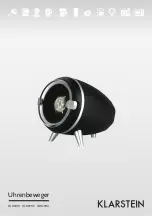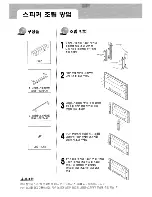
9
and risk analysis are in accordance with explosion protection regulations (defined by
standard EN378-1).
Safety guidelines:
•
Keep ignition sources away (heat, sparks, open flames, hot surfaces).
•
Use a damp cloth or sponge to remove condensation water and for cleaning. Do
not use dry clothes or sponges to dry the unit. (Risk of electrostatic charge and
sparking)
•
Before starting-up and restarting, fill the drain with approx. 2 litres of water.
Prevents carry-over of refrigerant into drains.
•
It is prohibited to cover any ventilation opening of the unit. Safe minimum
distance must be kept (between units) to ensure sufficient air access
•
Do not use any mechanical devices or other means (e.g., ice scrapers) to
accelerate the defrosting.
•
Do not use steam or high-pressure cleaners for basic cleaning.
•
Only install the units in well-ventilated rooms.
•
Do not install the units in cellars or lowered rooms.
•
Do not damage the refrigerant circuit.
•
Do not expose the unit
to temperatures higher than 70°C during transport
ation
and storage.
•
Avoid transmitting pulsations and vibrations to the unit.
•
Do not allow external forces to act on the appliance, e.g., careless handling with
a forklift or floor cleaning machine.
•
Do not crush or bend pipes.
•
Only qualified maintenance personnel may carry out work on the refrigerant
circuit.
•
Only open the refrigerant circuit and suck off the refrigerant in well-ventilated
rooms outside store business hours (when customers are not present) or
outdoors.
•
Disconnect the unit prior to all maintenance, service, or repair work.
•
Disposal of the unit must be performed following Waste & Disposal-Recycling
Regulations requirements
Failure to comply with safety requirements could lead to potential health injuries and
safety risks.
2.3.
Material damage during prolonged shutdown
•
Operate the appliance in a stable operating position (horizontal alignment).
•
Operate the device only on the designated adjustable feet.
•
Read the installation notes (see chapters 4.2 and 4.3)
•
Do not operate the unit above the climate class specified on the technical data
sticker.
Summary of Contents for VEGA QB HG
Page 1: ...OPERATION MANUAL SERVE OVER VEGA QB LG HG...
Page 6: ...6 1 2 Dimensions Fig 2 Dimensions of Vega QB HG TD Fig 3 Dimensions of Vega QB LG TD...
Page 7: ...7 Fig 4 Dimensions of Vega QB HG LU Fig 5 Dimensions of Vega QB LG LU...
Page 14: ...14 Install the plastic legs Lower the serve over...
Page 17: ...17 Apply silicone to seal the perimeter of connection Push the serve overs together...
Page 21: ...21 Example of installed serve overs...
Page 35: ...35 Date Work Name...

































